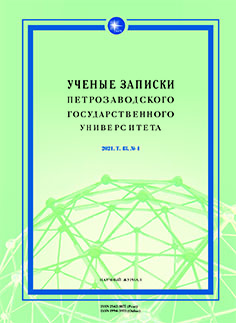КАРЕЛЬСКОЕ ВОССТАНИЕ 1921–1922 ГОДОВ: ПРИЧИНЫ, СУЩНОСТЬ, ПОСЛЕДСТВИЯ
KARELIAN REBELLION OF 1921–1922: CAUSES, ESSENCE, CONSEQUENCES
Author(s): Alexander Yu. OsipovSubject(s): Military history, Political history, Social history, Interwar Period (1920 - 1939)
Published by: Петрозаводский государственный университет
Keywords: Karelian rebellion; Russian Civil War; Karelian peasantry; Karelian regiment of forest partisans; Belomorsk regiment; Reboly battalion;
Summary/Abstract: The article analyzes the events occurring in Karelia in the winter of 1921–1922, when a massive peasant rebellion broke out in the northern part of the Karelian Labor Commune, in which Finnish officers and volunteers took part. Finnish officers and volunteers took an active part in these actions. Karelian events received different assessments: in addition to peasant rebellion, historians use such terms as civil war, Soviet-Finnish war, or kindred wars; moreover, the discussion is not over yet. This research is based on little-known documents collected from Russian and Finnish archives, as well as materials from the Soviet and foreign press. The introduction examines and reviews contemporary historiographic approaches; the second part contains the analysis of publications of the Soviet and Finnish local and central press and reveals their “official” approaches to the events in Karelia. Finally, the third part of the article analyzes the correspondence of the Soviet authorities, the lists of the rebels, the military command orders and the civil authorities’ acts. The analysis of the archival documents allows us to consider the events in Karelia to be a peasant rebellion, which became a continuation of the Civil War. The Karelian rebellion was caused by economic reasons and was one of the many peasant rebellions in Russia in 1920–1922.
Journal: Ученые записки Петрозаводского государственного университета
- Issue Year: 43/2021
- Issue No: 4
- Page Range: 71-77
- Page Count: 7
- Language: Russian

